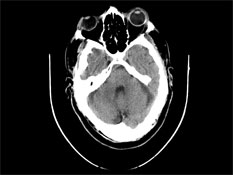Imaging Services
Lucile Packard Children’s Hospital uses state-of-the-art imaging technology and techniques to capture images with a level of detail, clarity and speed never before possible. These ultimately help our radiologists to quickly and accurately diagnose your child’s condition.
Technology
X-ray. An x-ray takes a picture of the bones inside of your child’s body. Each picture takes just a couple of seconds, like a regular photograph.

Computed Tomography (CT). The CT scanner is an x-ray camera that very quickly takes multiple pictures of the inside of your child’s body. It carefully adds them together to make a three-dimensional picture. Compared to older CTs, our High-Speed CT allows us to take very sharp images. It can also better manage small movements a child may make during an exam.

Magnetic Resonance Imaging (MRI). The MRI machine uses magnets, radio waves and a computer to take very detailed pictures of the inside of your child’s body. Your child will have to stay very still for about 30-60 minutes. Some children may receive anesthesia to help them stay still. Compared to older MRIs, our 3T MRI’s stronger magnet takes more detailed images in a shorter amount of time.

Ultrasound. Ultrasounds use high frequency sound waves to create an image of the inside of your child’s body.
Fluoroscopy. Fluoroscopy is a continuous, movie-like x-ray. It shows how a body part moves or how something moves through the body.
Voiding Cystourethrogram (VCUG). A VCUG is an x-ray of your child’s lower urinary tract and bladder.
Contrast. Some procedures may require your child to take contrast. Contrast is a fluid that your child will drink or get through an IV (or both). Once it is inside your child’s body, it looks extra bright in the radiology images and can make it easier for the doctors to see what they’re looking for.
Specialty Areas
Our pediatric radiologists have completed specialized training to take and interpret images of a child’s:
- Abdomen and chest, including:
- Liver
- Bowel
- Kidney and bladder
- Female reproductive system
- Muscles, bones and joints (musculoskeletal)
- Heart
- Fetal diagnostics
- Head, neck and spine



